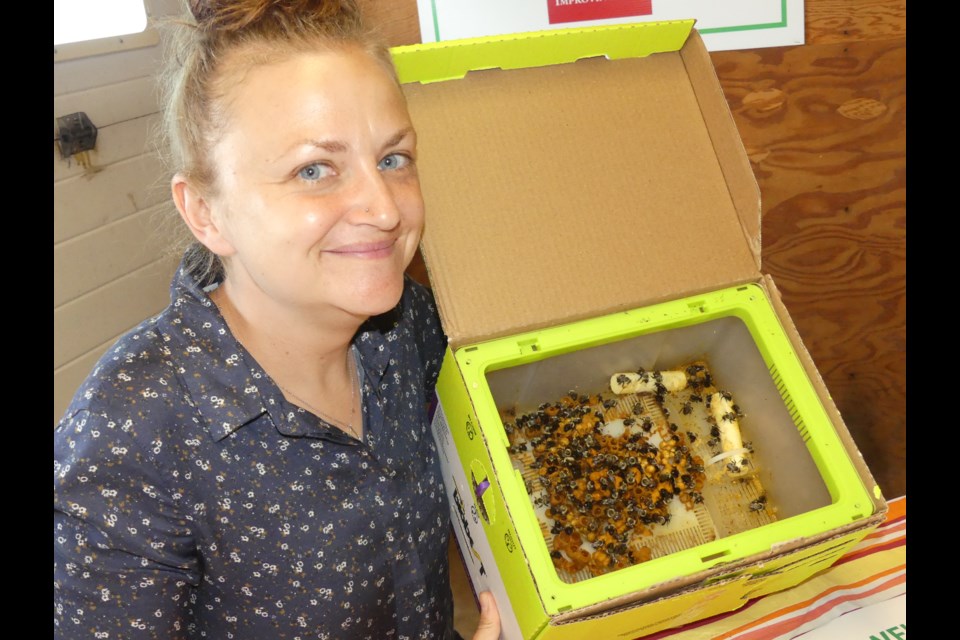Local residents got a chance to get up close with live bee colonies at a research centre in the Holland Marsh on Friday.
University of Guelph researchers held an outreach day at the Muck Crops Research Station just outside of Bradford West Gwillimbury, where growers and members of the public were invited to learn about ongoing projects and take tours of their work in nearby fields and overgrown berms along the canal.
Angela Gradish, who has studied bees for 13 years, explained the eastern bumblebee colonies were displayed to show what they look like but also to raise awareness about improving bee populations.
“Bumblebees are really important pollinators,” she said, adding some other researchers’ projects related to boosting refuges for pollinators helps bees grow their numbers.
“It’s just about supporting them as a population overall,” she said.
The two colonies on display were each about the size of a shoebox, with bees buzzing around on top of yellow honey pots and larvae in pods where they were being incubated and fed. The queen — the largest one in the bunch — sat still while incubating larvae.
Members of the public, master gardeners, and members of the Ontario Ministry of Agriculture, Food and Rural Affairs (OMAFRA) toured the research station.
“I’m just really happy we are getting a lot of members of the general public … so they can see the berms and the fields. It helps them understand the bigger picture,” said graduate student Alexandra Stinson, who is studying agricultural pests.
That bigger picture, added fellow grad student Dillon Muldoon, is about how researchers are producing work with a goal of helping the environment, improving sustainability, assisting growers, and attempting to improve the agricultural system as a whole.
“People don’t realize so much agricultural production is happening right in their own backyard,” he said.
Muldoon gave tours of his project at some overgrown marsh berms — strips of land bordering the canal — where he is growing different types of plants to add to the ones already there, and then monitoring them to see whether they can attract more pollinators and natural enemy insects.
So far, he said, he has been successful in that goal.
Last year, BWG council received a number of complaints about overgrown berms, and council voted to trim them on the Canal Road side and let them grow wild on the water side.
Despite the marsh’s expansive land area, Muldoon has said it does not provide a good habitat for “beneficial insects,” and he is hoping to improve that with his study, which is funded by OMAFRA.
Peter Shuttleworth, a restoration project specialist with the Lake Simcoe Region Conservation Authority, was also on hand at the event to share information about the organization’s projects.
One initiative, called Soil Your Undies, is about soil testing and has been popular in the region, he said.
The conservation authority has also done a variety of habitat enhancements — from planting trees, to building snake hibernaculums — and is currently promoting funding opportunities for the agricultural community.
“Anything to boost ecological function,” Shuttleworth said. “We’re here to get projects in the ground.”



